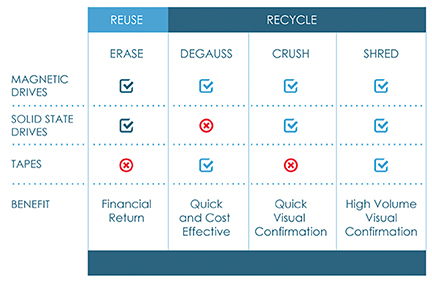Electronics Returns: Strategies for Improving Your Reverse Logistics Program
By Sean Magann, Sims Lifecycle Services
In February 2019 (1), U.S. online sales surpassed brick-and-mortar sales for the first time. While online retailers had reason to celebrate, this growth comes with its own set of challenges, most notably customer returns. According to Tony Sciarrotta, executive director of the Reverse Logistics Association (RLA) (2), the return rate of e-commerce purchases is three to four times higher than that for brick-and-mortar purchases and as such, the growth in online sales will lead to an increase in returned items.
These returns, also known as reverse logistics, have unique challenges such as cost, lack of infrastructure, and internal and external compliance. Reverse logistics processes apply to various industries; however, electronics and technology manufacturers and distributors tend to see the highest return rates for high-ticket items, with 20 percent of devices returned. It is important for these organizations to understand what assets are in the pipeline, and what should be done with products that have reached their end-of-life.
The following strategies will enable companies to develop a successful and efficient reverse logistics program.
Consult with Experts.
Ensure compliance when managing IT assets across borders.
When seeking expertise on global compliance and transboundary movements, the right advice will help avoid regulatory risks.
Country-specific regulations govern cross boundary transport of products that are considered e-waste. If moving e-waste across a border, it is imperative that the process is fully compliant with specific country regulations.
Ensure Transparency.
Identify efficiencies in the reverse logistics process from beginning to end.
Integrating inventory management systems across multiple service providers can offer businesses asset-specific visibility for all devices that have gone through the reverse logistics process. When managing multiple service providers (repair and disposition), this type of integration offers the opportunity to drive down costs and maximize revenue-generating efforts.
Utilizing platforms that can integrate and link all service providers can also allow companies to capitalize on income-generating opportunities.
When professionals were asked about their current reverse logistics information systems, the survey (3) found that only 29 percent of respondents are extremely satisfied with it, while 71 percent are complacent or dissatisfied.
It is important to work with an IT asset disposition company that can innovate with you to create your personalized solution.
Remove the Risk.
Avoid data exposure when you move the ITAD and data destruction processes closer to home.
Transporting any data storage device off premises opens up risks for data exposure as any intact data becomes vulnerable and can result in a potential data breach. For this reason, it has become standard for businesses to utilize on-site data security and shredding services.
These services generally include three components:
1. Onsite serial number reconciliation – Reporting should include inventory reports to verify the physical inventory against a master asset list. Any discrepancies should be highlighted and communicated back to you immediately. For leased equipment, an accurate list of inventory can simplify the return of leased equipment and prevent unnecessary chargebacks.
2. Data destruction via degaussing, wiping, and/or crushing. (See Exhibit A)
- Degaussing is quick but renders the drive inoperable and only works on magnetic media.
- Data wiping allows internal redeployment and resale of drives. Hard drive erasure offers a great solution for destroying data and ensuring value recovery.
- High-volume shredding services are available as well.

(Exhibit A)
3. Transfer of all ownership of assets – After onsite services have taken place, certificates of data destruction and receipts of record of ownership change mitigate potential liability.
With online returns increasing, it is critical to have an efficient reverse program. Fortunately this can been done without sacrificing compliance if the companies work with the right reverse and recycling partners.
Sources
1. https://www.cnbc.com/2019/04/02/online-shopping-officially-overtakes-brick-and-mortar-retail-for-the-first-time-ever.html
2. https://www.logisticsmgmt.com/article/reverse_logistics_in_the_age_of_entitlement
3. https://www.industryarchive.org/articles/profiting-from-reverse-logistics-automation-61
 Sean Magann
Sean MagannSean Magann, Sims Lifecycle Services’ Chief Commercial Officer, is one of the world’s thought leaders on all aspects of managing the lifecycle of enterprise IT and data center equipment. With more than 20 years of industry experience coupled with developing and executing the geographic expansion of facilities in international markets, Mr. Magann has developed a complementary background for helping global fortune 500 companies manage successful IT asset disposition and cloud recycling programs.